|
EM Update | Vol. 12, Issue 30 | Oct. 13, 2020 |
|
|
|
|
Editor's Note Workers Achieve Historic Cleanup of Uranium Enrichment Complex
|
EM’s cleanup has transformed the former Oak Ridge Gaseous Diffusion Plant into a multi-use industrial park that is providing new economic opportunities to the community.
OAK RIDGE, Tenn. – A decades-long effort to clean and transform the former Oak Ridge Gaseous Diffusion Plant is complete, resulting in a historic first-ever removal of a uranium enrichment complex.
“It’s hard to convey the magnitude of what our workforce just achieved,” said Jay Mullis, manager of DOE’s Oak Ridge Office of Environmental Management. “They safely took down hundreds of deteriorated and contaminated structures, some of which were the largest buildings in the world. We’ve now arrived at the finish line on this marathon effort, and I couldn’t be more proud of the skilled, talented men and women who made this accomplishment possible for the first time ever.”
In the early 1940s, when the U.S. Army Corps of Engineers began acquiring farmland that would later become Oak Ridge, few could envision the massive facilities that would be constructed there, including the largest building in the world at the time. Using the code name K-25, the site produced enriched uranium to power the weaponry that ended World War II.
Renamed the Oak Ridge Gaseous Diffusion Plant, the site expanded with new buildings constructed to produce enriched uranium for defense and commercial purposes and later to explore new enrichment technologies. Those operations continued until the mid-1980s, and the site was shut down permanently in 1987. This left hundreds of contaminated facilities that had to be remediated and removed — among them five large gaseous diffusion enrichment buildings, including the mile-long, U-shaped K-25 Building.
By the 1990s, EM formed a plan to clean up and transform the site into an asset that could generate new economic opportunities for the community. In 1996, the site was renamed the East Tennessee Technology Park to reflect its new trajectory.
 |
After a decades-long effort, EM has completed demolition of all buildings at Oak Ridge’s East Tennessee Technology Park, removing hundreds of deteriorating, contaminated structures that spanned 13 million square feet.
The first major structure to be removed was one of the first built at the site — the K-1001 Administration Building. Containing more than two acres of floor space, the four-wing structure included EM and contractor offices. It was demolished in 1999.
Through the next decade, workers took down various facilities, including a large cafeteria, a medical facility, and laboratories. In 2006, the K-29 facility, built in 1951, was the first of the five massive enrichment facilities to fall. Its teardown paved the way for the demolition of the other gaseous diffusion buildings: K-25, K-27, K-31, and K-33. K-27 was the last to come down, in 2016.
The largest and most challenging demolition project was the K-25 Building. Demolishing the four-story, 44-acre facility took years of planning as workers removed uranium deposits throughout the facility and addressed other contaminants. It had degraded over the years, with rainfall often infiltrating and deteriorating the structure. Workers began tearing into the building in 2008, and demolition was completed five years later.
 |
The most challenging demolition project at the East Tennessee Technology Park was the K-25 Building. Crews safely took down the mile-long former uranium enrichment building over a five-year period.
EM’s goal to complete demolition of all five gaseous diffusion buildings by 2016, called Vision 2016, was successfully realized. Then EM set out for its next goal, Vision 2020, to take down the remainder of the facilities in the former enrichment complex by the end of 2020. Recent notable demolition activities that led to this achievement include:
- TSCA Incinerator: This facility operated from 1991 to 2009, treating 35.6 million pounds of waste. It was demolished in 2018. The one-of-a-kind Toxic Substances Control Act (TSCA) Incinerator was named after a law Congress passed in 1976 that addresses the production, importation, use, and disposal of specific chemicals, including polychlorinated biphenyls.
- Central Neutralization Facility: This sprawling complex previously treated the site’s industrial wastewater. With new treatment systems installed, this facility was no longer needed and was demolished in 2018.
- K-1037 Barrier Production Facility: This building was constructed in 1945. Through the years, it was expanded to a total of 380,000 square feet. It was originally used as a warehouse, and later produced the barrier material used in the gaseous diffusion process. The facility was shut down in 1982 and demolished in 2019.
- Poplar Creek cleanup: The Poplar Creek area housed some of the most contaminated facilities at the site and posed significant cleanup challenges. When operational, these facilities supported the uranium enrichment buildings. Demolition of these 11 structures was completed in 2019.
- Centrifuge Complex: This complex was built in stages to develop, test, and demonstrate centrifuge technology for uranium enrichment. The last of these facilities ceased operation in the mid-1980s. Workers completed demolition of this four-building, 235,000-square-foot complex earlier this year.
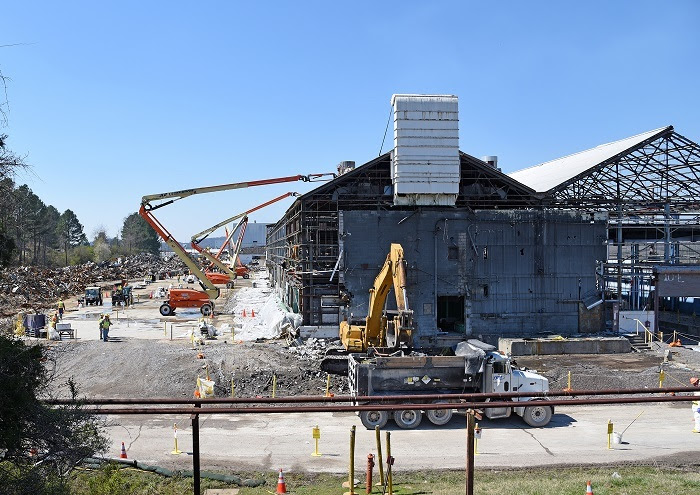 |
The K-1037 Barrier Production Facility was the largest remaining structure at the East Tennessee Technology Park after five uranium enrichment buildings were taken down there. Finishing this demolition project was a key step toward achieving Vision 2020.
Since cleanup operations began, hundreds of buildings measuring more than 13 million square feet have been demolished. More than 1.7 million cubic yards of waste — enough to fill up 515 Olympic-size swimming pools — have been disposed, including nearly 30,000 truckloads of soil. This progress has paved the way for EM to transfer 1,300 acres of land back to the community for economic development and another 100 acres have been set aside for historic preservation.
-Contributor: Wayne McKinney
Built in Secret, K-25 Site Would Serve Country for Decades
 |
OAK RIDGE, Tenn. – The K-25 site, now called the East Tennessee Technology Park (ETTP), was built in 1943 in a rural region of East Tennessee.
Almost overnight, farmland gave way to massive structures erected for the Manhattan Project — a top secret project that developed an atomic weapon to end World War II.
Oak Ridge was constructed in an area ideal for the government’s secret mission. Ridges and valleys provided natural barriers and security around the various sites, an isolated setting provided secrecy, and proximity to rivers provided access to abundant power.
By September 1943, construction was underway on the 44-acre, mile-long K-25 Building. When it was finished 18 months later, it would be the largest building in the world. Not only did employees erect the world’s largest building in record time, but the revolutionary technology they developed inside the building — known as gaseous diffusion — proved to be the most efficient method for enriching uranium.
 |
This picture taken in the 1940s shows the K-25 Building sitting behind some of the still-standing farm houses that previously belonged to Wheat community residents who were relocated to make room for the massive wartime effort.
Residents
of the Elza, Scarboro, Wheat, and Robertsville communities were
relocated to make way for Oak Ridge, which included the K-25 site; the
X-10 site, which is now the Oak Ridge National Laboratory; and the Y-12
site, now known as the Y-12 National Security Complex.
Trailers
and “hutments,” or housing encampments, dotted the landscape in the
early days of Oak Ridge, which grew to a population of more than 70,000
in just over two years. While Oak Ridge was one of the largest towns in
Tennessee at the time, it was not listed on any public map.
Creating housing quickly was a priority, and a construction camp dubbed Happy Valley was created for workers building the K-25 site. At its peak, Happy Valley housed 15,000 residents in hutments, dormitories, barracks, trailers, and houses. It included a school, cafeterias, bakery, post office, a refrigeration and cold storage plant, theater, recreation halls, and a bowling alley. A commercial center featured a grocery store, barbershop, shoe shop, and dry goods store.
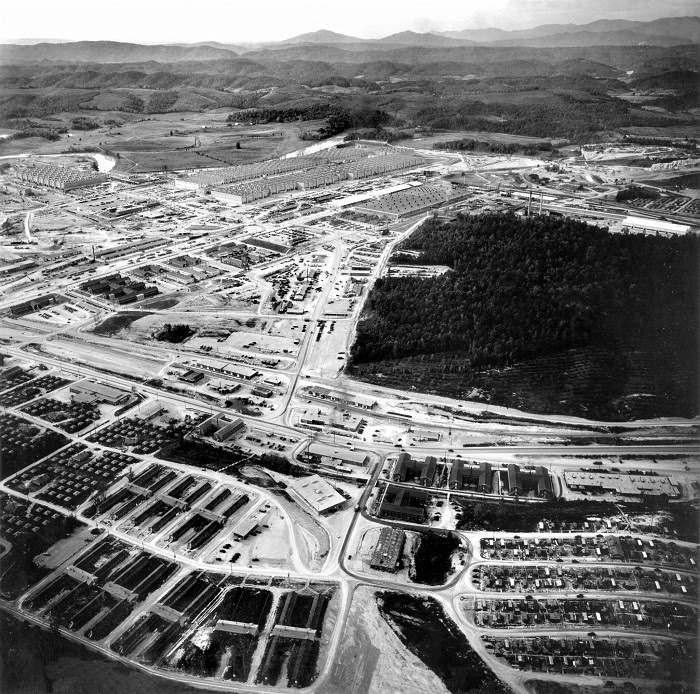 |
|
A view from Happy Valley looking toward the K-25 site. At its peak, Happy Valley had 15,000 residents in hutments, dormitories, barracks, trailers, and houses. After World War II, the K-25 site would expand and become known as the Oak Ridge Gaseous Diffusion Plant. Aside from its contribution to the Manhattan Project, it also played a pivotal role in the Cold War by producing large amounts of enriched uranium for defense and commercial purposes. It provided fuel to the first nuclear submarine, the U.S.S. Nautilus, and the first nuclear power plant in Shippingport, Pennsylvania. Years later, engineers and scientists at the site began developing and testing new enrichment methods using centrifuge technology. Ultimately the site ceased operations in the mid-1980s and it was shut down permanently in 1987. Today, the EM program has removed all of the old, contaminated structures and transformed the site into a multi-use industrial park, national park, and recreation area to give the site a new chapter for the community. One of EM’s most recent completions was the construction of the K-25 History Center. The center provides an in-depth history, capturing the stories of the workers who constructed and operated the site. It offers visitors 7,500 square feet of exhibits with more than 250 original artifacts on display. Nearly 1,000 oral histories were collected over a 10-year span from former Manhattan Project and Cold War workers for exhibits and interactive galleries. -Contributor: Mike Butler |
|
East Tennessee Technology Park Transformation Becomes a Reality
|
OAK RIDGE, Tenn. – Almost 25 years ago, when the former Oak Ridge Gaseous Diffusion Plant sat shuttered with dilapidated, contaminated buildings, its future as an economic and recreational hub was hard to imagine. Now, with cleanup complete, that transformation has become a reality.
With the Oak Ridge Gaseous Diffusion Plant closing permanently in 1987, DOE leaders and their contractor counterparts charted the next steps for the site. The site’s closure impacted local employment, and the buildings needed remediation.
The solution was a first-of-a-kind approach within the DOE complex. Oak Ridge launched efforts to remove environmental and structural hazards, and went a step further by transitioning the site into an industrial park for private companies. The twofold strategy was designed to enhance safety and provide new economic opportunities for the area.
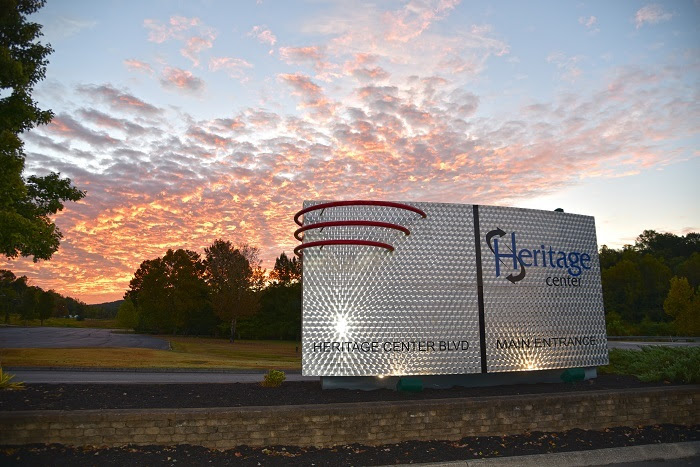 |
The East Tennessee Technology Park’s landscape has changed dramatically since cleanup began, facilitating the site’s transformation into a multi-use industrial park.
In 1996, DOE leadership in Oak Ridge began a reindustrialization process to find new purposes for land and infrastructure that no longer served government missions.
As this process began, the site was renamed the East Tennessee Technology Park (ETTP) to reflect its new vision. Employees identified buildings that could be reused by private companies, and they began taking down those that were hazardous or unneeded. Reindustrialization provided instant infrastructure for the community to attract new industry and jobs.
“Transferring land and infrastructure and finding new purposes for a portion of these facilities has saved considerable taxpayer dollars and promotes economic growth,” said Dave Adler, director of the Oak Ridge Office of EM (OREM) quality and mission support division. “We’ve been very successful at simultaneously transferring land as cleanup is completed in an area, which has provided new economic opportunities to the community sooner.”
 |
Coqui Radio Pharmaceuticals Corp. announced that it will build a medical isotope production facility at the East Tennessee Technology Park. The company will build the facility and expects to begin operating it in 2025, providing more than 200 high-paying jobs.
To date, 14 facilities and nearly 1,300 acres of land have been transferred for economic development, with another 600 acres slated for economic development in the years ahead. Approximately 20 businesses are located at the site, and Coqui Radio Pharmaceuticals Corp. announced last year that it will build a medical isotope production facility at ETTP.
That company will focus on the production of molybdenum-99 isotopes, the most widely used medical isotope in the world. Currently, there is no production source for the isotope in the U.S. It is used in 18 million medical procedures a year in the U.S., aiding in the diagnosis and treatment of cancer and other diseases.
The company will build the facility at ETTP, and expects to begin operations there in 2025, providing more than 200 high-paying jobs.
More than 3,400 acres of land at ETTP have been designated for conservation. These areas provide a habitat for wildlife and offer hiking trails, bike paths, and other activities for the public.
 |
The K-25 History Center opened earlier this year to share stories of the men and women who built and operated the site during the Manhattan Project and Cold War.
About 100 acres have been set aside for historic preservation. OREM has constructed the K-25 History Center, and it will build another facility in coming years to replicate a unit of the former K-25 Building. Additionally, the K-25 footprint has become part of the Manhattan Project National Historical Park. These efforts will attract visitors and educate people about the site’s history and impact.
The landscape has changed dramatically since OREM created a vision for the site decades ago. Towering, contaminated structures have given way to grassy fields, solar arrays, and newly constructed educational facilities.
“This site spent decades providing critical support to the country as a uranium enrichment plant,” said Kevin Ironside, reindustrialization manager for OREM cleanup contractor UCOR. “Now, it has a new purpose and continues to be a valuable economic as well as recreational asset for the region.”
-Contributor: Wayne McKinney
Innovation Accelerates Cleanup, Reduces Cost, Enhances Safety

“Pack as you go” waste disposal improves project efficiency and eliminates risks from waste sitting for extended periods outside.
OAK RIDGE, Tenn. – From a more efficient approach for disposing debris to a digital-based monitoring system that helps detect and prevent heat stress, DOE’s Oak Ridge Office of Environmental Management (OREM) and its contractor UCOR have incorporated dozens of innovative solutions to enhance safety and accelerate the pace of cleanup at the East Tennessee Technology Park (ETTP).
OREM and UCOR advanced ETTP’s cleanup by four years, saving $500 million in taxpayer funds. Most innovations that made this achievement possible involved handling, transporting, and disposing waste.
Critical to the success was the onsite Environmental Management Waste Management Facility for debris and soil generated from cleanup projects. Tearing down hundreds of facilities, many of them spanning numerous football fields in size, created a massive amount of waste.
Projects at ETTP led to more than 1.7 million cubic yards of waste — enough to fill 515 Olympic-size swimming pools — including nearly 30,000 truckloads of soil. Approximately 10 percent of the waste was highly contaminated, and crews separated and sent that waste out of state for disposal. The remaining 90 percent was disposed safely at the onsite disposal facility and landfills. This prevented tens of thousands of cross-country trips that would significantly increase costs and slow the rate of cleanup.
Crews painted contaminated equipment and piping with bright colors to easily recognize and segregate them in the field for offsite disposal. They also repurposed transite panels removed from the largest buildings being demolished and used them as an additional protective layer on top of the onsite disposal facility’s liner.
 |
A view of workers constructing Haul Road, which has allowed the Oak Ridge Office of Environmental Management to avoid using local public highways to transport tens of thousands of truckloads of waste for disposal.
Waste that met criteria for the onsite disposal facility and landfills was loaded on trucks and shipped using a private road, known as the Haul Road, dedicated exclusively to hauling waste from the cleanup sites to the onsite disposal facility and landfills. By constructing Haul Road, OREM improved efficiency and increased the safety margin, avoiding local highways to ship tens of thousands of truckloads of waste for disposal.
Another strategy that proved successful involved hauling demolition debris away for disposal as it was generated. It resulted in significant schedule efficiencies for projects, and reduced risk of environmental issues associated with not removing the waste immediately.
 |
A worker shows a safety app on his tablet screen that displays real-time heat indexes, heart rates, and hourly forecasts specific to the user’s location. Supervisors can track their team members’ health simultaneously using the tool.
 |
An aerial lift virtual reality training program has allowed operators to practice motor skills and improve their performance in a risk-free environment.
Other initiatives have focused on worker safety. OREM and UCOR piloted a telemetric heart rate monitoring system to detect and avoid the threat of heat stress for workers in the summer months. The system includes a chest-strap heart rate sensor that operates in conjunction with a tablet device. This added new levels of protection for crews in the field conducting EM’s mission.
A virtual reality training program on aerial lifts has allowed operators to practice motor skills and improve performance in a risk-free environment. OREM and UCOR also introduced a worker alert system that uses transmitters and receivers to alert workers to static or mobile hazards in their immediate areas. Usually affixed to a hard hat, the device vibrates when a potential hazard, such as a large piece of machinery, is nearby.
Through innovations and collaboration, OREM and UCOR have incorporated the latest technologies to keep workers safe, and identified strategies that have enabled them to complete one of the nation’s largest cleanup projects.
-Contributor: Mike Butler
Workers Draw From ETTP Experience at Other Oak Ridge Sites
 |
Experienced East Tennessee Technology Park workers are moving into facilities such as Oak Ridge National Laboratory’s Building 3042, a former research reactor, to begin the next phase of cleanup in Oak Ridge.
OAK RIDGE, Tenn. – While DOE’s Oak Ridge Office of Environmental Management (OREM) celebrates a historic achievement at the East Tennessee Technology Park (ETTP), more work is needed to address old, contaminated structures and modernize other portions of the Oak Ridge Reservation.
Now that major cleanup is complete at ETTP, more than 120 highly trained workers have transitioned from ETTP to join existing crews working at the Oak Ridge National Laboratory (ORNL) and the Y-12 National Security Complex (Y-12).
The benefit of transitioning these workers to other Oak Ridge sites is substantial. Employees are able to continue their jobs, they have extensive training and experience in challenging settings, and they are already grounded in the site’s rigorous safety culture. ETTP workers were able to move to ORNL and Y-12 and begin work after a site-specific briefing, saving hours of training time and cost per person.
These workers possess in-depth knowledge and experience in deactivating aging and contaminated facilities, including how to safely remove radiological and hazardous material such as contaminated equipment, asbestos-containing material, and legacy electrical equipment. Removing hazards such as these is highly regulated, requiring specific personal protective gear and special handling.

A view of Beta 1 at the Y-12 National Security Complex, which former East Tennessee Technology Park workers will begin preparing for demolition in the months ahead.
 |
Former East Tennessee Technology Park workers are transitioning to Building 3005, located in the central campus of Oak Ridge National Laboratory. They are actively deactivating the former research reactor facility.
Former ETTP Enterprise Project Manager Dan Macias is now leading cleanup efforts at ORNL and Y-12.
“We are lucky to be able to have this level of skill and motivation in our existing workforce,” he said. “These folks know how to work safely while conducting multiple activities. It is a huge benefit to be able to transfer both their skills and their mindset to other facilities on the reservation.”
Many of the innovations and lessons learned at ETTP, which enabled OREM and cleanup contractor UCOR to complete ETTP demolition four years ahead of schedule, are now being applied at the other projects, such as the Biology Complex at Y-12, where crews are using their expertise to remove asbestos.
Craft workers, safety specialists, waste handling personnel, and project managers used their expertise to deactivate multiple buildings simultaneously at ETTP, a trend continuing with projects at ORNL and Y-12.
At ORNL and Y-12, chemical, radiological, and structural hazards need to be addressed at more than 200 excess and contaminated facilities. Those sites also house the largest inventory of high-risk facilities of any location in the DOE complex.
While these future cleanup projects present a daunting undertaking, Oak Ridge’s trained and experienced workers have already proven they’re up to the task.
-Contributor: Susanne Dupes
Generations of Workers Supported Defense Mission, Cleanup
 |
Janice Shannon has worked in Oak Ridge for 50 years. At the East Tennessee Technology Park, she served in the nuclear materials control and accountability organization.
OAK RIDGE, Tenn. – Several generations of employees have worked at the former K-25 site, now known as the East Tennessee Technology Park (ETTP), supporting efforts to produce enriched uranium, and more recently, to clean up the site.
For some, the nation’s first uranium enrichment plant became a kind of “family business,” where fathers, mothers, sons, daughters, and uncles worked side by side over seven decades.
Those who have worked at the site in recent years have witnessed dramatic changes as massive, contaminated structures and hundreds of associated buildings have come down. New job-creating businesses have moved to the site as it transforms to a private-sector industrial park.
This decades-long environmental cleanup effort was one of the largest projects conducted in the U.S., and it marks the first enrichment complex in the world that has been successfully removed.
Fifty-Year Veteran
Few employees have achieved the longevity of Janice Shannon, who celebrated her 50th year of employment at Oak Ridge in 2017. A long-time employee at the Oak Ridge National Laboratory, Shannon transferred to K-25, where she served as a field representative of the nuclear materials control and accountability organization.
“When it came time to begin tearing down the plant, there were hundreds of compressors, converters, and pipes with nuclear materials in them from past operations,” Shannon said. “Our job was precise accountability. [We] were responsible for keeping track and documenting the disposition of these materials and components.”
She added, “Working at K-25 has been the highlight of my career. I’m glad I was able to work here before the K-25 building was torn down."
The Youngest Visitor
At 2 ½ months old, while still in the arms of his mother, Louie Finley became the youngest person to receive a security badge as a visitor to K-25. His mother, Helen, a security clerk, took her son to work to show him off to coworkers.
“At the time, K-25 had strict security requirements, and no one could enter the site without a badge — even if you were a cute little baby,” Finley said.
Years later, he would return to the site as a full-time employee, launching a nearly 40-year career that ended with his retirement in 2013.
 |
Mo Beeler started at Oak Ridge in 1964. He had a multi-decade career at K-25, where one of his responsibilities involved inspecting miles of piping.
Inspecting the Pipes
Starting in 1964, Mo Beeler began a multi-decade career at K-25 that led him on a recurring, meandering tour of miles of piping that connected processes in the uranium enrichment plant.
“I was here when K-25 was operating, and I was here when they tore it down,” Beeler said. “I have personally sat on, crawled over, and inspected hundreds of miles of pipe. I’ve seen it all.”
 |
Nick Fletcher is a newer addition to Oak Ridge. He began working there two years ago after completing an apprenticeship training program, and went on to support cleanup efforts at the East Tennessee Technology Park.
An Apprentice Joins the Team
Nick Fletcher joined Oak Ridge Office of Environmental Management cleanup contractor UCOR two years ago after completing training in the East Tennessee Apprenticeship Readiness Program, a UCOR and labor union joint effort that leads to employment opportunities at DOE sites for construction craft. Fletcher said he appreciates the record of achievement that was built before him at Oak Ridge.
“It’s amazing being out here and being part of this,” Fletcher said. “It’s exciting to see all these buildings coming down safely and continuing the legacy of those who were here before me.”
 |
Vincent Tomazewski has served as a senior industrial hygiene technician at the East Tennessee Technology Park since 2016. He has seen many contaminated and dilapidated facilities successfully demolished to achieve Oak Ridge’s Vision 2020.
Four Years and Counting
Cleanup was well underway when Vincent Tomazewski, a senior industrial hygiene technician, started working at ETTP in 2016. While he arrived the same year the last of five historic uranium enrichment buildings was torn down, he has still seen many of the other contaminated and dilapidated facilities fall since then.
Tomazewski’s job is to ensure workers are protected from exposure to hazardous chemicals. His most memorable experience was being part of the demolition team for Building K-631, which had been used to withdraw gaseous depleted uranium from the enrichment cascade, convert it to liquid, and transfer it into transport cylinders. Now, Tomazewski is looking to the future.
“Vision 2020 is an important accomplishment,” he said. “If ETTP is properly remediated, it will allow us to get a lot more work in the future. There are decades of work remaining at ORNL and Y-12, enough to last through my entire career.”
-Contributor: Mike Butler
Advisory Board Marks 25 Years of Critical Input to Oak Ridge Cleanup
 |
Dave Adler, deputy designated federal officer of the Oak Ridge Site Specific Advisory Board, speaks to board members about cleanup at the East Tennessee Technology Park.
OAK RIDGE, Tenn. – Members of the Oak Ridge Site Specific Advisory Board (ORSSAB) expressed pride as DOE’s Oak Ridge Office of Environmental Management (OREM) transformed the East Tennessee Technology Park (ETTP) for new uses they helped chart beginning 25 years ago.
Established in 1995, the board provides input on final use and long-term stewardship of the local DOE site.
“DOE has shown a deep commitment to the community with the time spent attending board meetings, listening to our concerns, and taking our recommendations into account,” said Michelle Lohmann, the board’s 2020 chairperson.
ORSSAB has provided more than 200 recommendations to OREM since the board’s formation, and many of those recommendations have addressed cleanup and historic preservation at ETTP.
“Every major record of decision developed by OREM has had heavy SSAB involvement and none of the final records of decisions have been at odds with SSAB majority opinions,” said Dave Adler, director of OREM’s quality and mission support division and the board’s deputy designated federal officer.
The board’s work over the years has included:
- Sponsorship of a public information meeting on the reindustrialization of ETTP in April 1998;
- Recommendations for the end use at ETTP in July 1998 as part of the Final Report of the End Use Working Group and the Stakeholder Report on Stewardship;
- Inclusion in the K-25 memorandum of agreement beginning in 2005;
- Hosting a public meeting on changes to the cleanup of buildings K-25 and K-27 in July 2006;
- Launching an oral history program in October 2007;
- Sponsorship of a public meeting on Building K-25 historic preservation; and
- Commentary on the request for proposal for ETTP cleanup, ETTP site interpretation efforts, and land transfers in 2010.
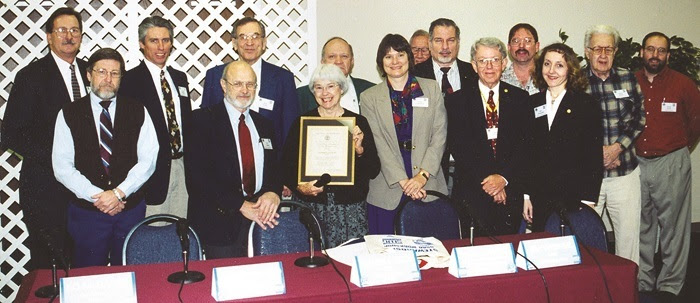 |
The End Use Working Group in 1998. Some members of the group served on the Oak Ridge Site Specific Advisory Board and were instrumental in writing documents and suggestions for long-term stewardship that attracted national attention and remain a guide for modern cleanup.
Belinda Price, a former board member and officer, said DOE was diligent in bringing subject-matter experts to ORSSAB meetings to answer questions from the board, whose members come from diverse backgrounds.
“These experts always spent the time necessary to make sure that the SSAB members fully understood the material that was presented so the board could provide informed recommendations,” Price said.
As OREM celebrates the completion of a major milestone at ETTP, the board shifts focus to EM’s cleanup at the Y-12 National Security Complex and Oak Ridge National Laboratory (ORNL).
“We have all witnessed the dramatic transformation of the site after decades of collaboration among DOE, federal and state agencies, and groups like ORSSAB,” Lohmann said. “And the current membership is excited to be the group that will support a similar effort for Oak Ridge National Laboratory and Y-12 National Security Complex cleanup.”
In the years ahead, ORSSAB will need volunteers to fill its advisory roles. Interested residents of the counties surrounding Oak Ridge are encouraged to apply for ORSSAB membership here.
-Contributor: Shelley Kimel



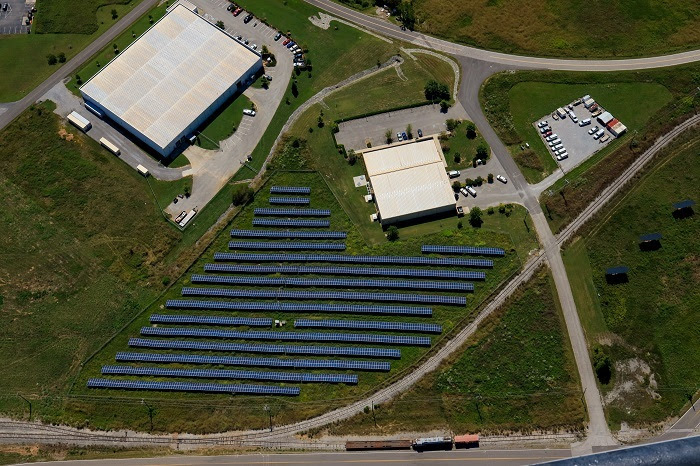
No comments:
Post a Comment